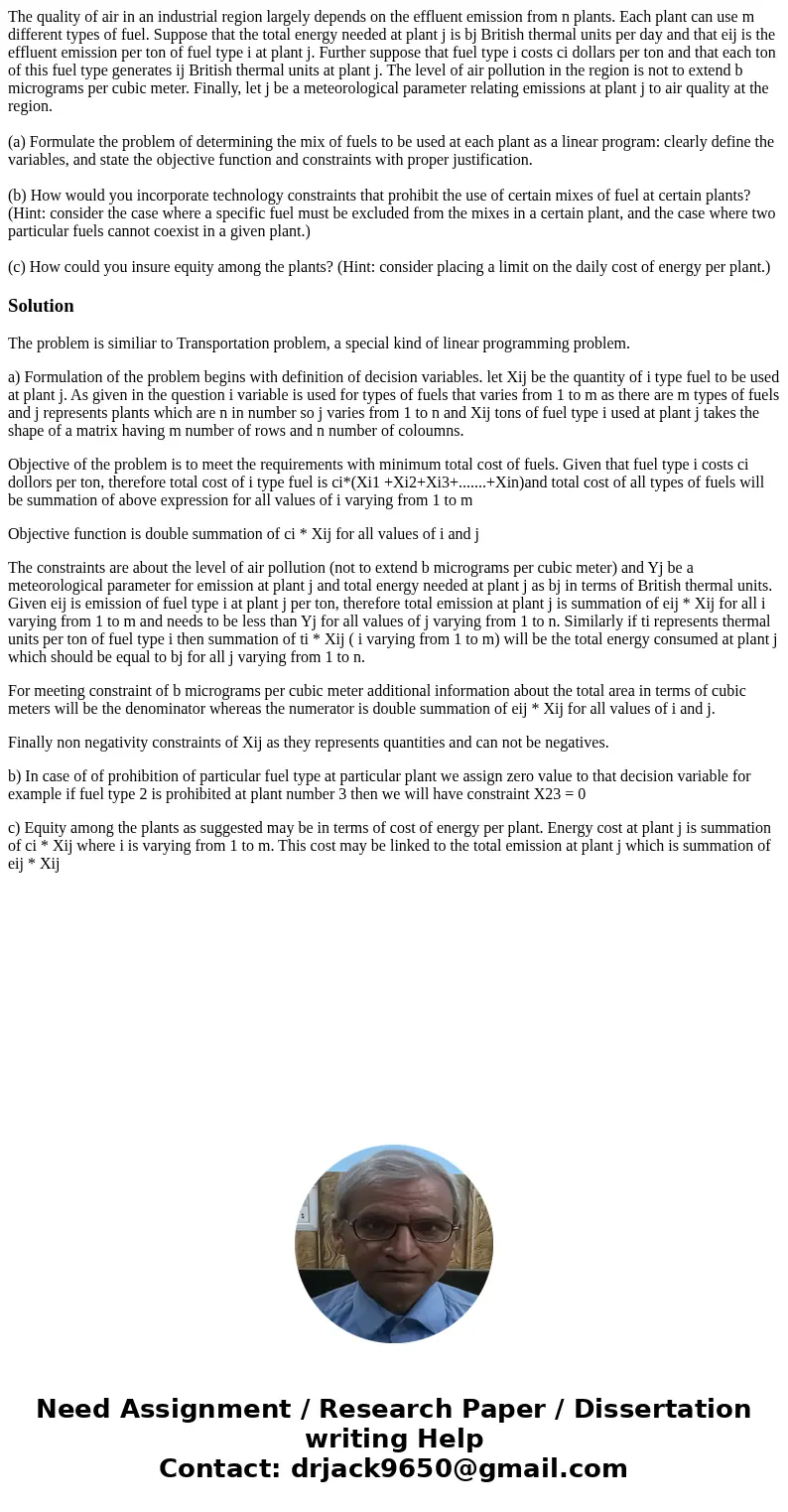The quality of air in an industrial region largely depends o
The quality of air in an industrial region largely depends on the effluent emission from n plants. Each plant can use m different types of fuel. Suppose that the total energy needed at plant j is bj British thermal units per day and that eij is the effluent emission per ton of fuel type i at plant j. Further suppose that fuel type i costs ci dollars per ton and that each ton of this fuel type generates ij British thermal units at plant j. The level of air pollution in the region is not to extend b micrograms per cubic meter. Finally, let j be a meteorological parameter relating emissions at plant j to air quality at the region.
(a) Formulate the problem of determining the mix of fuels to be used at each plant as a linear program: clearly define the variables, and state the objective function and constraints with proper justification.
(b) How would you incorporate technology constraints that prohibit the use of certain mixes of fuel at certain plants? (Hint: consider the case where a specific fuel must be excluded from the mixes in a certain plant, and the case where two particular fuels cannot coexist in a given plant.)
(c) How could you insure equity among the plants? (Hint: consider placing a limit on the daily cost of energy per plant.)
Solution
The problem is similiar to Transportation problem, a special kind of linear programming problem.
a) Formulation of the problem begins with definition of decision variables. let Xij be the quantity of i type fuel to be used at plant j. As given in the question i variable is used for types of fuels that varies from 1 to m as there are m types of fuels and j represents plants which are n in number so j varies from 1 to n and Xij tons of fuel type i used at plant j takes the shape of a matrix having m number of rows and n number of coloumns.
Objective of the problem is to meet the requirements with minimum total cost of fuels. Given that fuel type i costs ci dollors per ton, therefore total cost of i type fuel is ci*(Xi1 +Xi2+Xi3+.......+Xin)and total cost of all types of fuels will be summation of above expression for all values of i varying from 1 to m
Objective function is double summation of ci * Xij for all values of i and j
The constraints are about the level of air pollution (not to extend b micrograms per cubic meter) and Yj be a meteorological parameter for emission at plant j and total energy needed at plant j as bj in terms of British thermal units. Given eij is emission of fuel type i at plant j per ton, therefore total emission at plant j is summation of eij * Xij for all i varying from 1 to m and needs to be less than Yj for all values of j varying from 1 to n. Similarly if ti represents thermal units per ton of fuel type i then summation of ti * Xij ( i varying from 1 to m) will be the total energy consumed at plant j which should be equal to bj for all j varying from 1 to n.
For meeting constraint of b micrograms per cubic meter additional information about the total area in terms of cubic meters will be the denominator whereas the numerator is double summation of eij * Xij for all values of i and j.
Finally non negativity constraints of Xij as they represents quantities and can not be negatives.
b) In case of of prohibition of particular fuel type at particular plant we assign zero value to that decision variable for example if fuel type 2 is prohibited at plant number 3 then we will have constraint X23 = 0
c) Equity among the plants as suggested may be in terms of cost of energy per plant. Energy cost at plant j is summation of ci * Xij where i is varying from 1 to m. This cost may be linked to the total emission at plant j which is summation of eij * Xij

 Homework Sourse
Homework Sourse